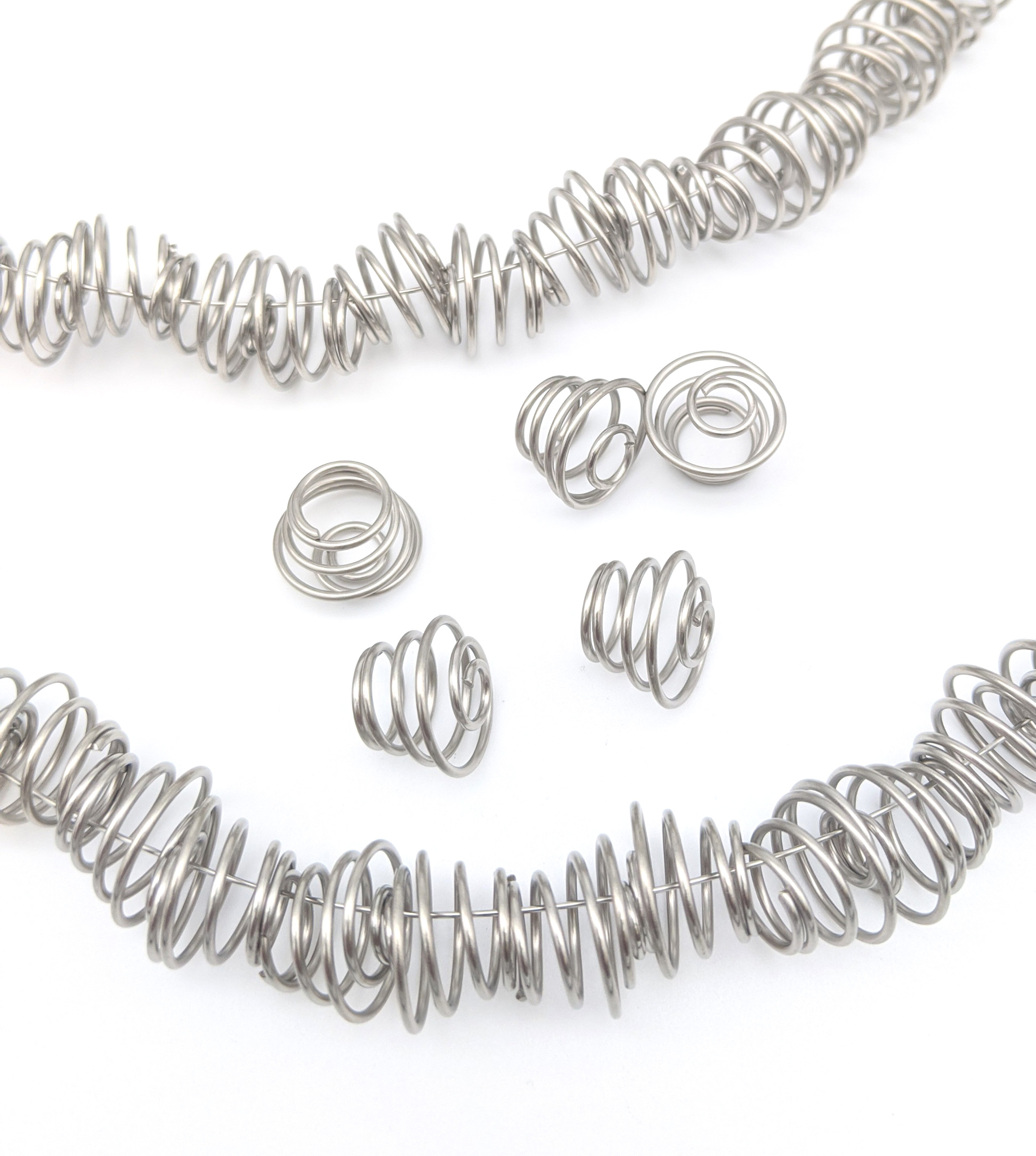Get unique, complex parts easily. No matter your requirements, Chaoyi Spring creates hard-to-produce coil springs and wire forms.
Let us help you create the custom wire form you need, from S-hooks and J-hooks to utility hooks and more.
We work closely with customers across a wide range of industries, helping them design and manufacture made-to-order parts.
Why choose Chaoyi Spring? We prioritize customer-focused collaboration, modern equipment and the latest technology to make your parts per print.
Find the information and guidance you need, from measuring a spring to learning about materials, placing an order and much more.
When it comes to designing mechanisms and systems that require controlled movement or force, engineers often face a crucial decision: torsion vs. spring. Both torsion and spring elements play vital


When it comes to designing mechanisms and systems that require controlled movement or force, engineers often face a crucial decision: torsion vs. spring. Both torsion and spring elements play vital roles in various applications, but their distinct characteristics and functionalities necessitate careful consideration. This comprehensive guide delves into the nuances of torsion and spring mechanisms, exploring their respective strengths and weaknesses to help you make an informed choice for your specific needs.

Before diving into the intricacies of torsion vs. spring, let's establish a clear understanding of each mechanism. Torsion refers to the twisting or rotating force applied to an object, causing it to deform along its axis. Imagine a simple metal rod fixed at one end. When a force is applied perpendicular to the rod's axis, it will twist or deform, resisting the applied force. Torsion elements are typically designed to handle this twisting motion and store energy in the form of torsional strain.
Springs, on the other hand, are elastic components designed to absorb and release energy when subjected to compression, tension, or bending. They work by storing mechanical energy when deformed and releasing it upon returning to their original state. Common examples include coil springs, leaf springs, and helical springs, each with distinct properties and applications.
Now that we have a fundamental understanding of torsion and spring mechanisms, let's delve into the critical factors to consider when choosing between the two for your application. Understanding these nuances will guide you towards the optimal solution for your specific requirements.
The first and foremost consideration is the type of force and motion your application demands. Torsion mechanisms are ideal for situations where a rotating or twisting force is required. They excel at handling rotational movements and providing torque, often found in applications like:
Springs, on the other hand, are preferred for applications involving linear or translational motion. They effectively handle compression, tension, and bending, making them suitable for:
The load capacity and durability of both torsion and spring mechanisms play a crucial role in selecting the right solution. Torsion bars, when properly designed, can handle significant torsional loads and provide high durability. Their ability to store and release energy efficiently makes them suitable for demanding applications.
Springs also exhibit varying load capacities depending on their design and material. Coil springs, for example, offer high load capacity and resilience, while leaf springs are known for their robust construction and ability to handle heavy loads.
The physical size and weight of torsion and spring mechanisms are critical aspects to consider, especially in space-constrained applications. Torsion bars can often be relatively compact, especially when compared to equivalent-strength coil springs. However, the size and weight can vary depending on the material and the required torque.
Springs, on the other hand, can range from small and lightweight for delicate applications to large and heavy for heavy-duty tasks.
The choice of materials significantly impacts the performance, durability, and cost of both torsion and spring elements. Common materials used in torsion bars include steel, aluminum, and composite materials. Steel offers high strength and durability but can be heavier. Aluminum is lighter and less expensive but may not be as strong as steel. Composite materials offer a balance of strength and weight, often used in specific applications.
Springs are also manufactured from various materials, including steel, stainless steel, and spring wire. Steel offers excellent strength and affordability, while stainless steel provides corrosion resistance. Spring wire is often used for smaller springs requiring flexibility and a low spring rate.
Environmental factors such as temperature, humidity, and corrosion resistance can impact the long-term performance of both torsion and spring mechanisms. In harsh environments, selecting materials with suitable properties becomes critical. For example, stainless steel springs offer excellent corrosion resistance, while certain coatings can enhance protection against environmental degradation.
Ultimately, the decision to use torsion or spring hinges on a thorough analysis of your specific application requirements. Consider the following factors when making your decision:
By carefully considering these factors, you can confidently select the most appropriate torsion or spring solution for your specific application, ensuring optimal performance, reliability, and longevity.
In conclusion, torsion and spring mechanisms offer distinct characteristics and advantages, making them suitable for diverse applications. Understanding the key differences, considerations, and factors influencing the choice between torsion and spring will empower you to make informed decisions that align with your specific requirements. Whether you need to handle rotational forces, provide linear motion, or absorb shocks, a thorough analysis of your application will guide you towards the optimal solution for performance, durability, and cost-effectiveness.
Browse some of the custom wire forms and springs that we manufacture. Don’t see what you need? We specialize in made-to-order products that meet your application requirements.
Visit Our GalleryNeed a custom wire form or coil spring? We make it work. Fill out the contact form and a representative will respond within 1 business day. If you have a PDF or CAD file, you can submit to request a quote.